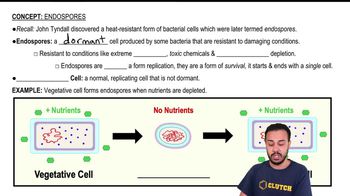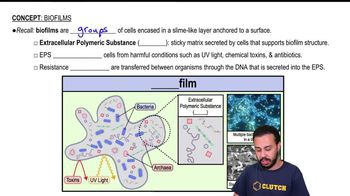Why must media, vessels, and instruments be sterilized before they are used for microbiological procedures?
Describe three types of microbes that are extremely resistant to antimicrobial treatment, and explain why they are resistant.
 Verified step by step guidance
Verified step by step guidance
Verified Solution
Key Concepts
Endospores

Biofilms

Mycobacteria

Which of the following types of radiation is more widely used as an antimicrobial technique?
a. electron beams
b, visible light waves
c. radio waves
d. microwaves
In practical terms in everyday use, which of the following statements provides the definition of sterilization?
a. Sterilization eliminates all organisms and viruses.
b. Sterilization eliminates harmful microorganisms and viruses.
c. Sterilization eliminates prions.
d. Sterilization eliminates hyperthermophiles.
Compare and contrast the action of alcohols, halogens, and oxidizing agents in controlling microbial growth.
Which of the following substances would most effectively inhibit anaerobes?
a. phenol
b. silver
c. ethanol
d. hydrogen peroxide
Hyperthermophilic prokaryotes may remain viable in canned goods after commercial sterilization. Why is this situation not dangerous to consumers?
